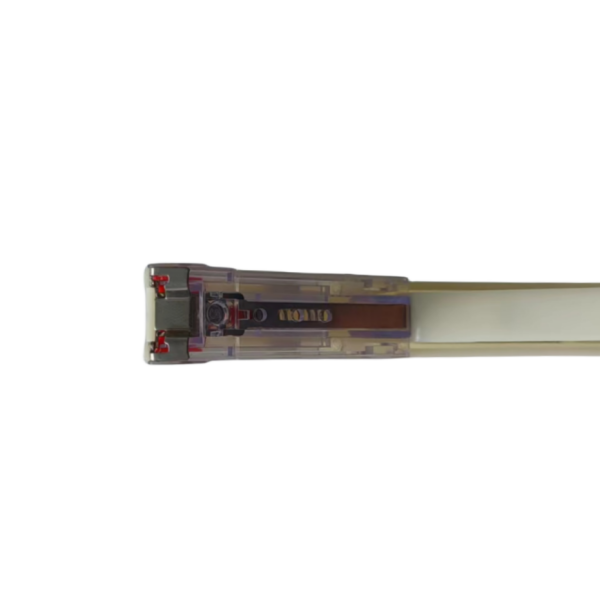The Structure of Skin Stapler

Introduction of Skin Stapler
When it comes to medical procedures, the tools and equipment used play a crucial role in ensuring precision and patient safety. One such device that has become indispensable in the medical field is the skin stapler. In this article, we will delve into the intricate details of the structure of a skin stapler, understanding how this seemingly simple instrument plays a vital role in the field of surgery and wound closure.
What is a Skin Stapler?
A skin stapler is a medical device used to close surgical incisions or wounds in the skin. It works by placing small metal staples across the wound edges to hold them together and facilitate healing.

Components of a Skin Stapler
The structure of a skin stapler is composed of several key components, each serving a specific function:

1. Skin Stapler Body
The main body of the stapler is typically made of stainless steel or high-quality plastic, making it sturdy yet lightweight. It houses the other critical components and provides a comfortable grip for the user.
2. Skin Stapler Handle
The handle is where the user exerts pressure to activate the stapler. It is designed for ease of use, allowing medical professionals to apply the necessary force to staple the wound securely.
In KYLT, we provide plastic ABS skin stapler body and handle parts, and skin stapler body & handle injection molds.
Get a free quotation for your skin stapler plastic parts manufacturing, please email us: cnkylt@aliyun.com

3. Skin Stapler Anvil
The anvil is the part of the stapler that contacts the tissue being stapled. It features a curved surface that helps in precise staple formation, ensuring the staples hold the tissue together without causing damage.
4. Cartridge
The cartridge holds the staples and is loaded into the stapler. Depending on the model, cartridges can contain varying numbers of staples, typically ranging from 15 to 35 staples per cartridge.
5. Safety Lock
A skin stapler often comes with a safety lock to prevent accidental firing. This feature is crucial in maintaining the sterility of the instrument and avoiding injury.
6. Staple Release Mechanism
In case of misfiring or the need to remove a staple, the staple release mechanism allows for the safe extraction of staples without causing harm to the patient.
How a Skin Stapler Works
Understanding the mechanism behind a skin stapler is essential for medical professionals to use it effectively. Here's a step-by-step breakdown of how it operates:
1. Loading
The user loads the cartridge containing sterile staples into the stapler. This is done by aligning the cartridge with the body and securely attaching it.
2. Positioning
The stapler is positioned over the wound, with the anvil on one side and the staple driver on the other, ensuring that the tissue to be stapled is sandwiched in between.
3. Compression
The medical professional compresses the handle, which triggers the staple driver to push a single staple through the tissue, while the anvil simultaneously bends the staple to hold the tissue together.
4. Repeat
The process is repeated until the wound or incision is entirely closed, with each staple being evenly spaced to provide stability.
Advantages of Skin Staplers
Skin staplers offer several advantages over traditional sutures:
-
Speed: Skin staplers are significantly faster, reducing the time a patient spends in surgery.
-
Precision: They provide consistent and even staple placement.
-
Reduced Tissue Reaction: Staples typically cause less tissue inflammation compared to sutures.
-
Minimal Scarring: Staples often result in smaller scars compared to sutures.
Conclusion
In the world of medicine, precision and efficiency are paramount. Skin staplers play a vital role in wound closure, and understanding their structure and operation is essential for medical professionals. With their ergonomic design and sterile, efficient operation, skin staplers have become a staple in the field of surgery.
KYLT is experienced in manufacturing all kinds of plastic medical parts injection molds and plastic parts. Please email us: cnkylt@aliyun.com for an instant Free quotation for your skin stapler design.
FAQs
1. Are skin staplers safe to use?
Skin staplers are safe when used correctly by trained medical professionals. They are designed to minimize the risk of infection and tissue damage.
2. How long does it take to learn how to use a skin stapler effectively?
Medical professionals usually undergo training to learn how to use skin staplers proficiently. The learning curve varies, but most become adept with practice.
3. Can skin staplers be used on all types of wounds?
Skin staplers are ideal for closing surgical incisions and wounds with well-approximated edges. They may not be suitable for wounds with irregular or jagged edges.
4. Do skin staples need to be removed after a certain period?
The need to remove skin staples depends on the location and type of wound. Your healthcare provider will advise you on when and how they should be removed.
5. Are there any contraindications for using a skin stapler?
Skin staplers may not be suitable for certain patients with specific medical conditions. It's essential to consult with a healthcare professional to determine the best wound closure method for your situation.




